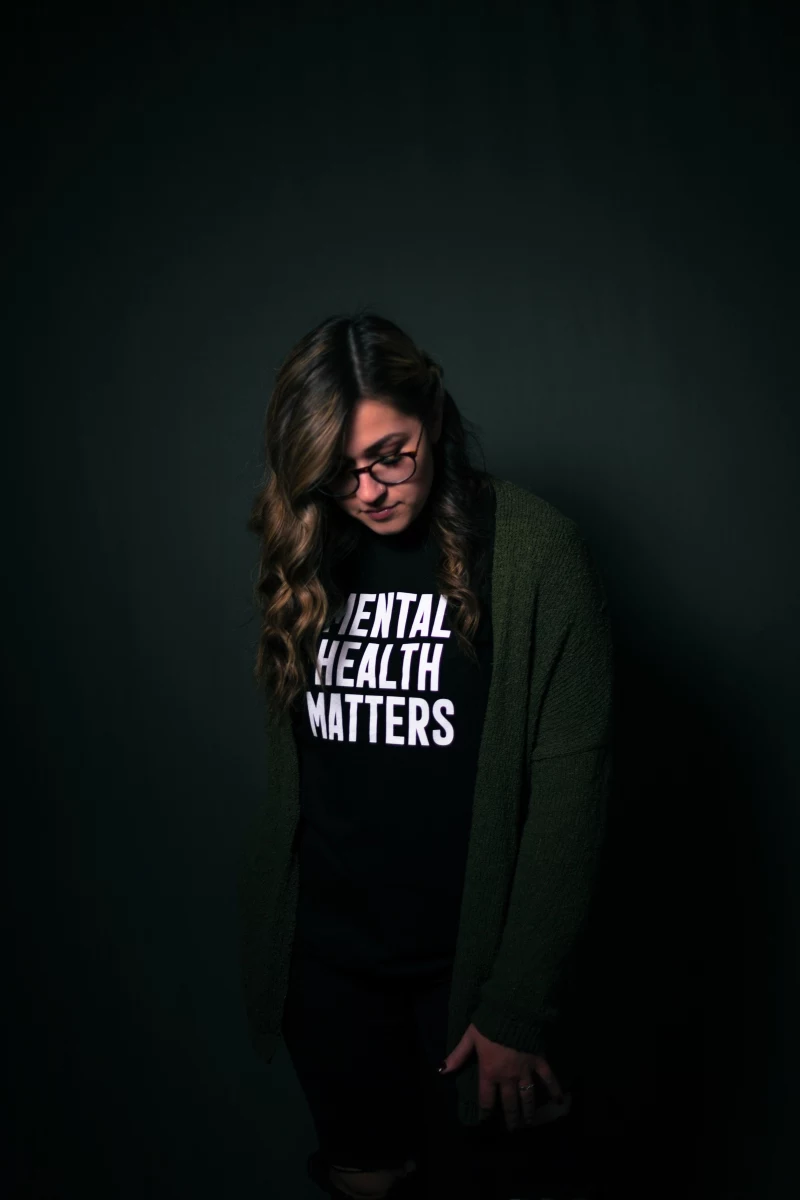How to Finally Talk About What’s Really Going On: A Practical Guide
In all my time as a professional counselor, I’ve sat across from hundreds of people in the quiet of an office. They’re from every background you can imagine—teachers, veterans, software engineers, stay-at-home parents. And honestly, they almost always start the same way: with a heavy silence that just hangs in the air before the real words come out. That quiet is usually built from years of holding something inside, something they felt they couldn’t, or shouldn’t, ever say out loud.
In this article
But the moment a person truly opens up for the first time, there’s a real shift in the room. It’s like a breath they’ve been holding for a decade is finally let go. You can literally see the tension in their shoulders drop. That’s not just a feeling; it’s a physiological change.
Let’s get one thing straight. Deciding to talk about your mental health isn’t a sign of weakness. It’s the very first step in taking back control.

So many of us are taught to carry our struggles alone, worried about judgment from family, friends, or coworkers. We worry about being seen as unstable or incapable. And those fears are valid, but the alternative—silence—almost always does more damage in the long run. This isn’t just about why you should talk, but how to do it. Let’s walk through the tools and practical steps that can help you find your voice.
What’s Happening in Your Brain, Anyway?
To really get why talking helps, it’s useful to know a little about the brain. When you’re dealing with stress, anxiety, or deep sadness, your brain’s threat-detection center, the amygdala, goes into overdrive. Think of it as your body’s alarm system, and it’s screaming, triggering that classic fight-or-flight response. Your heart races, your breathing gets shallow, and stress hormones flood your system. This is great if you’re, say, running from a bear. It’s not so great for handling the constant, low-grade stress of an unaddressed mental health issue.

When you bottle all that up, the alarm never shuts off. You end up living in a state of chronic stress, which can lead to very real physical problems like high blood pressure, a weakened immune system, and digestive trouble. It also makes it incredibly hard to think clearly. The part of your brain that handles problem-solving and emotional regulation, the prefrontal cortex, basically gets drowned out by the noise.
How Words Can Quiet the Alarm
So, here’s the magic of putting your feelings into words. The simple act of naming an emotion—a process some experts call “affect labeling”—forces you to use that thinking part of your brain. I’ve seen it happen countless times. A client will just say they feel “bad.” But when we dig a little deeper to find a more precise word, like “betrayed,” “humiliated,” or “overlooked,” something clicks.
Neuroscience research has actually shown this in action. Brain scans reveal that when people verbalize their negative feelings, that thinking part of the brain lights up, and the alarm center calms down. It’s like you’re telling your internal alarm system, “Hey, I see the threat. I’m on it.” Speaking up isn’t just an emotional release; it’s a biological process that helps you regulate your own brain.

How to Actually Start the Conversation
Knowing you should talk and actually doing it are two very different things. The fear of saying the wrong thing or getting a bad reaction can be paralyzing. So, let’s break it down into manageable steps. These aren’t mind tricks, just practical tools to make a hard thing a little easier.
Step 1: Choose Your Listener Wisely
This is, without a doubt, the most important step. Not everyone has earned the right to hear your story, and sharing with the wrong person can make things worse. A good listener isn’t someone who will solve your problems for you. A good listener is someone who can sit with your feelings without judging them.
Before you decide, ask yourself:
- Do they generally show empathy? Think about how they react when other people share tough news. Do they listen, or do they immediately jump in with unsolicited advice?
- Can they keep a secret? A history of gossiping is a huge red flag. Your vulnerability needs a safe container.
- Are they in a good place themselves? Honestly, it’s not fair to unload on someone who is already drowning in their own crisis.
- Do they respect your boundaries in general? Someone who respects you won’t push you to share more than you’re ready to.
Sometimes, the right person isn’t your best friend or a family member. It might be a mentor, a respected colleague, or even a spiritual advisor. Your first conversation doesn’t have to be with the most important person in your life; it has to be with the safest.

Step 2: Plan the When and Where
Please, don’t try to have a serious conversation on the fly. Bringing it up in the middle of a chaotic family dinner or five minutes before your friend has to leave for work just sets everyone up for failure. You need to create a space for the conversation to breathe.
- Ask for their time. A simple text like, “Hey, I have something a bit serious on my mind. Do you have 30 minutes to talk sometime this week when things are quiet?” works wonders. It signals the importance and respects their schedule.
- Pick a private, comfy spot. A walk in the park, a quiet corner of a coffee shop, or your own living room are all good options. Just avoid places with tons of distractions.
- Ditch the distractions. Put your phones on silent. Turn off the TV. Give the conversation the focus it deserves.

Step 3: Use a Simple Opener
The hardest part is often just getting the first sentence out. Having a simple script in your back pocket can make all the difference. Here are a few that have worked well for people I’ve worked with:
- The Direct Approach: “I’ve been struggling with my mental health lately, and I trust you enough to want to talk to you about it.”
- The Softer Opening: “I’ve been feeling really overwhelmed [or anxious/depressed] for a while, and it would mean a lot if I could just tell you what’s been going on.”
- The Permission-Based Start: “I’m going through a tough time and need to talk to someone. Would you be open to just listening for a bit?”
I remember a client, a tough-as-nails veteran, who used that last one with his adult daughter. He told me he was terrified, but she just hugged him and said, “Of course, Dad.” That single conversation was the start of his real healing journey.

Heads up: Tears might happen when you start talking. That’s not just okay, it’s a normal and healthy release. It’s not a sign of failure. It’s also perfectly fine to say, “Wow, this is harder than I thought. Can we take a minute?”
Step 4: Clearly State What You Need
Most people want to help, but they have no idea how. Their go-to instinct is often to offer solutions, which can feel dismissive when all you really want is to be heard. You can guide them by telling them exactly what you need.
Try adding one of these lines after your opener:
- “Right now, I don’t really need advice. I just need someone to listen.”
- “It would help me so much just to say this out loud to someone who cares.”
This takes the pressure off them to “fix” you and lets them settle into the one role you need them to play: a supportive listener.
What If the Conversation Goes Badly?
Let’s be real—sometimes, even with the best planning, people react poorly. They might get defensive, dismiss your feelings, or make it about themselves. If that happens, you need an exit plan to protect yourself.
It’s okay to end the conversation. You can say something calm and simple like:
- “Okay, I can see this is difficult to hear. Maybe we should pause for now. Thanks for listening this far.”
- “I think I’m not explaining this well. Let’s maybe circle back to it another time.”
A bad reaction doesn’t mean you failed. It just means that person wasn’t the right one to hear your story. That’s okay. The courage was in trying.
It’s so important to remember that context matters. The stigma around mental health isn’t the same for everyone; it wears different masks in different cultures and generations.
In some families, keeping group harmony is the top priority, and talking about an individual struggle can feel like you’re bringing shame on the family. For many in older generations, the mindset was simply to “get on with it.” Mental health wasn’t a topic for discussion; it was a private burden. I’ve worked with people whose parents, often from a generation that valued stoicism above all, would say things that amounted to, “We didn’t have the luxury to be depressed.”
Acknowledging these realities isn’t an excuse to stay silent. It’s a strategic move. If you come from a background where mental health is taboo, your first conversation probably shouldn’t be with your family. It might be with a professional who understands your cultural background, or a friend from a similar background who gets it. The key is to find a path that honors both your heritage and your need for support.
Your Full Spectrum of Support
Talking to a friend is a huge step, but it’s just one tool in the toolbox. Building strong mental health often means using a few different tools at once.
-
Tier 1: Journaling (The Conversation with Yourself)
Before you talk to anyone else, talk to yourself. Journaling is a technique I recommend to almost everyone. It costs nothing, it’s 100% private, and it’s the safest place to practice naming your feelings. Just get the chaotic thoughts out of your head and onto a page. A simple way to start: At the end of the day, jot down a quick answer to: 1. A moment I felt good today. 2. A moment I struggled today. 3. One feeling I’m sitting with right now. -
Tier 2: A Trusted Confidant (Friends & Family)
This is what we’ve been talking about—carefully choosing someone in your life for connection and validation, not a clinical diagnosis. -
Tier 3: Support Groups (The Power of “Me Too”)
Sometimes, the most healing words you can hear are, “Me too.” Support groups offer a unique kind of magic. Being with people who truly get what you’re going through dissolves shame like nothing else. You can find amazing communities online or locally through peer-led organizations like the National Alliance on Mental Illness (NAMI) or the Depression and Bipolar Support Alliance (DBSA). -
Tier 4: Professional Guidance (Therapy)
Therapy isn’t just for a crisis. It’s a dedicated space to learn skills, gain insight, and make real, lasting changes. A good therapist does more than just listen; they teach you proven techniques to manage your emotions and reframe unhelpful thought patterns.
Finding and Affording a Therapist
Okay, let’s talk about the practical side of therapy, because it can feel overwhelming. First, who does what? In short: Psychiatrists (MDs) are medical doctors who can diagnose and prescribe medication. Psychologists (PhDs or PsyDs) have doctorates and provide therapy and testing, but most don’t prescribe meds. Then you have Master’s-level pros like Licensed Professional Counselors (LPCs/LMHCs) and Licensed Clinical Social Workers (LCSWs), who are the backbone of the therapy world, providing expert individual and group counseling.
The biggest hurdle for many is cost. To be frank, private therapy can range from $80 to over $250 per session depending on where you live and the therapist’s specialty. If that’s out of reach, you have options! Search for “sliding scale therapists near me,” who adjust their fee based on your income. Another fantastic resource is local university training clinics, where you can get low-cost care from supervised graduate students. And check out organizations like the Open Path Collective, a network that offers sessions for a much lower, fixed rate.
So, where do you find these people? A great starting point for anyone is a large online directory like Psychology Today. But for a more tailored fit, there are incredible resources available. For example, Therapy for Black Girls is an amazing platform for connecting Black women with culturally competent therapists, and the National Queer and Trans Therapists of Color Network helps connect people with providers who understand their specific life experiences.
How to Be the Person Someone Else Confides In
Once you start opening up, you might find that others start opening up to you. Knowing how to be a good listener is a gift, both to them and to your relationship.
- Listen to understand, not to reply. Just focus on hearing them out.
- Validate their feelings. This is the most powerful thing you can do. Simple phrases like, “That sounds incredibly hard,” or “It makes total sense that you’d feel that way,” are golden.
- Resist the urge to fix it. Unless they ask for advice, just listen. Quick tip: If they jump into fix-it mode with you, you can gently say, “I really appreciate you wanting to help. For now, I think I just need to be heard more than I need solutions.”
- Ask gentle, open-ended questions. Instead of “Why are you so anxious?” try, “What does that anxiety feel like for you?”
- Thank them for their trust. Ending with, “Thank you for trusting me with this,” reinforces their courage.
A Quick and Important Safety Note
This is all for educational purposes and isn’t a substitute for professional medical care. Reading this doesn’t create a therapist-client relationship. Your situation is unique and deserves personal attention from a qualified pro.
And please, be safe. Not all conversations are safe. If you are in an abusive relationship, talking to your abuser about your mental health could be used against you. Your first conversation should be with a professional, a domestic violence hotline, or a trusted person completely outside of that situation.
CRISIS WARNING: If you are having thoughts of harming yourself or someone else, that is a medical emergency. The advice here is not enough. Please get immediate help.
- Call or text 988 in the U.S. and Canada to connect with the Suicide & Crisis Lifeline.
- Go to your nearest hospital emergency room.
- Call your local emergency number (like 911).
Voicing the unseen struggles in your mind is a profound act of courage. It’s the way out of isolation. It won’t always be easy, but I promise you, it’s worth it. The silence is heavy, but your voice is so much stronger than you think.










